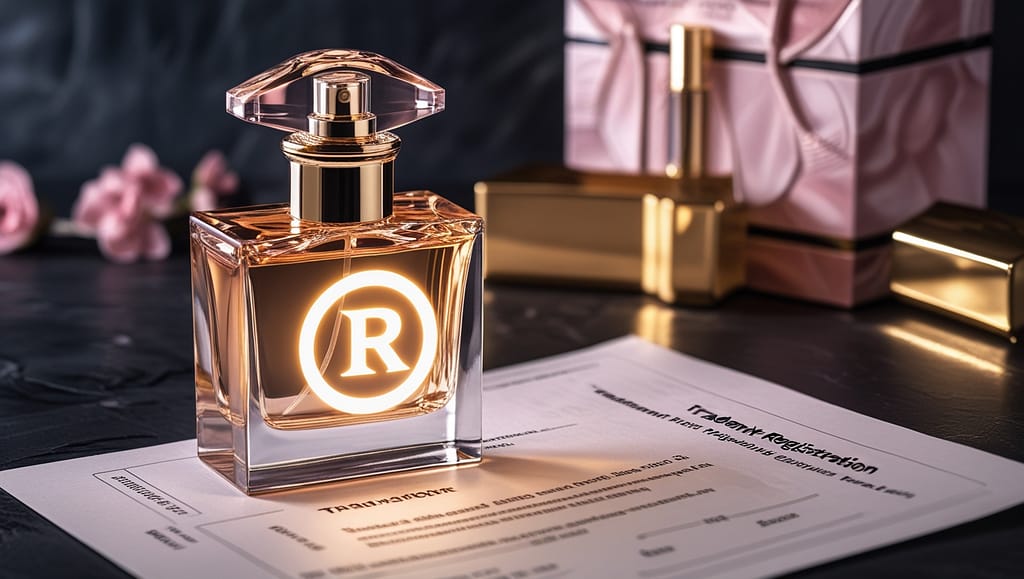Can You Trademark a Fragrance? Class 3 Trademark Rules Explained
Introduction
Fragrances play a crucial role in the identity of many brands, especially in the cosmetics and perfumery industry. But can you trademark a fragrance? While most businesses trademark their brand name, logo, or packaging, some may wonder if their unique scent can also be legally protected. Trademark laws, particularly under Class 3, cover perfumes, colognes, and scented products, but the rules for trademarking a fragrance are quite different from traditional trademarks. In this guide, we will explore whether fragrances can be trademarked, the legal requirements, and how perfumery brands can secure their intellectual property.

Understanding Trademark Class 3 for Fragrances
A trademark is a legal tool that protects a brand’s identity, preventing others from using similar marks for their products. The Nice Classification System categorizes trademarks into different classes, with Class 3 specifically covering:
- Perfumes and colognes
- Essential oils and aromatherapy products
- Scented lotions, creams, and body sprays
- Soaps and cleaning products with fragrances
If you own a perfumery brand, registering your trademark under Class 3 ensures that competitors cannot legally use a similar brand name or packaging in the fragrance industry. However, when it comes to trademarking an actual scent, things become more complicated.
Can a Fragrance Be Trademarked?
Unlike a brand name or a logo, a fragrance is not a visible mark. This makes it challenging to meet the standard trademark requirements. However, in some cases, fragrances have been successfully trademarked if they serve as a unique brand identifier.
To be eligible for a trademark, a fragrance must:
- Be Non-Functional – The scent should not be essential to the product’s use. For example, a perfume’s fragrance cannot be trademarked because it is the product itself, but a unique scent added to an unrelated product (like scented pencils or toys) may be eligible.
- Be Distinctive – The fragrance must set the brand apart from competitors and be recognized by consumers as a unique brand feature.
- Have Proof of Consumer Recognition – The brand must demonstrate that customers associate the scent specifically with the company and its products.
Examples of Trademarked Scents
While rare, some brands have successfully registered scent trademarks. For instance:
- A company trademarked a floral fragrance for yarn.
- A toy manufacturer secured a trademark for a scent used in its dolls.
- A business registered a unique cherry scent for synthetic lubricants.
These cases show that while difficult, trademarking a scent is possible under specific conditions.
How to Trademark a Fragrance
If you believe your brand has a distinctive scent that qualifies for trademark protection, follow these steps:
- Determine If the Fragrance is Functional
- If the scent is the main purpose of the product (like perfume or cologne), it cannot be trademarked.
- If it is an added feature to an unrelated product, it may be eligible.
- Conduct a Trademark Search
- Check the IP India database or consult a trademark expert to ensure no similar scent trademarks exist.
- Provide Proof of Distinctiveness
- Gather evidence that consumers recognize the scent as a brand identifier.
- This can include market surveys, sales data, and customer feedback.
- File the Trademark Application
- Submit the application with a detailed description of the scent and its association with the brand.
- Respond to Examination Requests
- The trademark office may request additional proof or clarification before approval.
Challenges in Scent Trademarking
Securing a trademark for a fragrance is far more difficult than for names or logos. Common challenges include:
- High Burden of Proof – You must provide strong evidence that consumers recognize the scent as a brand feature.
- Opposition from Competitors – Other businesses may challenge your application, arguing that scents should remain freely available.
- Legal Complexity – Many jurisdictions do not accept scent trademarks, making international protection difficult.
Alternative Protection for Fragrances
If trademarking your fragrance is not possible, consider other ways to protect your scent-based brand:
- Trade Secret Protection – Keep your fragrance formula confidential and use non-disclosure agreements (NDAs) to prevent leaks.
- Patent Protection – If your fragrance involves a unique chemical formula, applying for a patent may offer protection.
- Copyright for Packaging & Branding – Secure exclusive rights over your perfume’s name, logo, and packaging design.
Conclusion
While trademarking a fragrance is challenging, it is not impossible under specific conditions. Perfumery brands looking to protect their unique scents should explore all legal options, from traditional trademarks to trade secrets and patents. If you need expert guidance in securing a trademark for your perfume brand under Class 3, VMK Professionals can help. Contact us today for professional trademark assistance and brand protection strategies.



